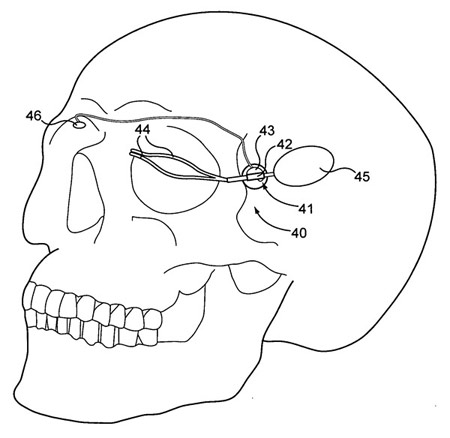Fake face muscles for the disabled
People with facial paralysis will experience more meaningful life thanks to artificial facial muscles invented by two American surgeons.
The birth of human prostheses has created great changes in medicine, especially for the disabled. With the current technological level, engineers can bring many functions of robots into prosthetics so that they become more perfect, even can receive commands directly from the human brain.
But that is the story of prosthetic and prosthetic hands. As for fake faces, it is still not possible to introduce the robot's control mechanisms. So sometimes they not only do not work but also cause many problems for users.
Two surgeons Craig Senders and Travis Tollefson of the University of California (USA) decided to change that reality by creating artificial muscle bundles with polymer material, so that the artificial face could mimic the states. Emotional on human face. This product is of great significance for those who are paralyzed.
 After being implanted under the skin, a polymer muscle bundle (No. 41) can help paralyzed people manipulate their eyes. Photo: Newscientist.
After being implanted under the skin, a polymer muscle bundle (No. 41) can help paralyzed people manipulate their eyes. Photo: Newscientist.
In the document submitted to the US patent office, the two inventors describe how a paralyzed person can perform a blink of an eye following a spinal cord injury, or a tangled syndrome. Neurological disorders such as Bell's palsy (paralysis of the facial muscles due to nerve inflammation).
A person who is incapable of controlling the eyelid will face difficulties in social communication and may fall into a state of inferiority. Besides, blinking eyelashes can cause ulcers in the eye and lead to blindness. To help patients aim and open their eyes, Craig and Travis implant a polymer muscle bundle under the skin (location 41). This muscle bundle is capable of pulling or dropping the strings attached to the upper and lower lashes of the eyes.
When patients want to close their eyes, their efforts will create an electrical current in the true muscle bundle near the eyes. Polymer muscle bundles are capable of detecting this current. It automatically shrinks when the current appears and pulls the wires to close both eyelids.
The two inventors said they have many measures to handle different situations. If someone loses the ability to control one eye's operation (due to a stroke, for example), they will use the camera to monitor normal eye activity and synchronize all paralyzed eye actions with one part. soft.
Craig and Travis also use sensors to control eyelid manipulation when exposed to strong light. The timer system is also used to help paralysis can blink continuously. The two doctors said that these solutions could also help artificial muscles simulate other movements on the face like breathing, opening their mouths.
- The way to
- The discovery of 'muscle disappearing' in humans more than 250 million years ago
- 8 mysteries of muscles
- Don't rush your own body, big muscles don't mean strong muscles
- Strange disease: The boy has a face
- How to know the person opposite you is making a fake smile?
- Video: Cats like to lick your face, if you want to do the opposite, buy this fake tongue
- Synthetic muscles help AI strong and skillful like in fantasy movies
- Fake arms help creative children with Lego
- Israeli scientists have created a 'tattoo' to help keep track of facial expressions
- Successfully developing artificial muscles like real ones, being able to reproduce themselves
- Video: Chinese farmers make their own steel hands
 Daily use inventions come from universities
Daily use inventions come from universities Special weight loss device helps prevent appetite
Special weight loss device helps prevent appetite 8 inventors were killed by their own inventions
8 inventors were killed by their own inventions Iran invented a motor car powered by water
Iran invented a motor car powered by water